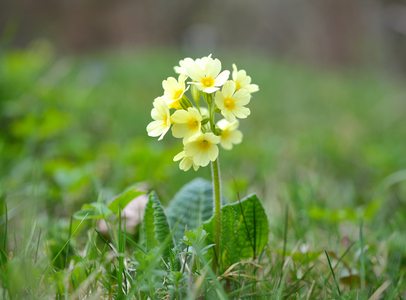Profile
The cowslip(Primula veris), also known as primrose, comes from the primrose genus(Primula). It is also known as meadow primrose, spring primrose, medicinal primrose and cowslip.
Its original name of cowslip dates back to the 15th century, and there are many interpretations of it, such as the resemblance of the inflorescence to your key.
It is a medicinal plant with a long history: even in the Middle Ages it was used as a proven medicine, especially for coughs.
Utilisation

Cowslip is a popular medicinal plant for treating coughs and colds. Cowslip (P. elatior) may also be used for the production of medicines, as there is hardly any difference in the ingredients. The underground organs (rhizome with roots) are used, occasionally also the flowers (with or without sepals).
The medicinal effect of the cowslip is mainly based on the so-called triterpene saponins, which are found in the underground parts and the flowers. They help to liquefy the viscous mucus in the lower and upper respiratory tract, making it easier to cough up colds and other respiratory diseases. Primrose flowers also contain flavonoids.
In folk medicine, primrose is used for many other ailments, such as whooping cough, asthma, headaches, gout and rheumatism, which nowadays should be treated with other medicines.
The rhizomes were once used in part as a sneezing powder, and the flowers are also used to colour Easter eggs.
Botany
The cowslip is a perennial, herbaceous plant that grows to a height of 15 to 25 centimetres. It grows upright from strong taproots and forms loose clumps. It is usually found in smaller and larger groups.
Its leaves form a basal rosette. They are matt grey-green, soft and hairy. The leaf blade is wrinkled and ovate with a rounded tip, the leaf edge is crenate.
They flower from March to May. This is when bright yolk-yellow flowers with a pale green calyx form in umbels on short, hairy stems. What distinguishes the primrose from other species are the orange spots on the throat of each petal. The flowers of Primula veris also exude a pleasantly sweet fragrance.
Service
The preservation of diversity is very important to us, which is why we store around 5,400 samples of seeds and plants in our gene bank . With the gene bank for agricultural crops, medicinal and aromatic plants, we are making a significant contribution to the preservation of biodiversity.
Last updated: 12.07.2024
automatically translated